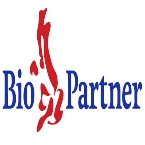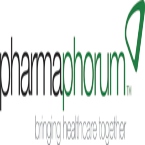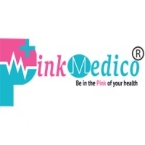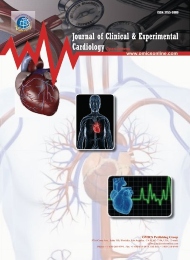Theme: Exploring the novel horizons to cure Cardiac disorders
Cardiology Summit 2022
CARDIOLOGY SUMMIT 2022 taking the privilege of invitation each one of the individuals to give their eminent presence at the upcoming Event “3rd Global Summit on Cardiology” amidst September 05-06, 2022 as Webinar, which working under theme: “Exploring the novel horizons to cure Cardiac disorders”.
Conference Agenda includes:
|
Presentation |
Talk duration |
|
· Workshops |
45 Minutes |
|
· Keynote Speech |
30 Minutes |
|
· Plenary Speaker talks |
20 Minutes |
|
· Video Presentation |
15 Minutes |
|
· Poster Presentations |
10 Minutes |
|
· E-poster Presentation |
Publication in the conference Proceedings |
|
· Exhibition |
1 Exhibitor Booth and 20 minutes Speaker Slot |
CARDIOLOGY SUMMIT 2022 is one of the Cardiology meetings 2022 which will be visited by all the Cardiologists, Researchers, Post.Doc, Cardiology educators, Pharmaceutical Companies.
3rd Global Summit on Cardiology (Cardiology Summit 2022) will join world-class researchers, scientists and cardiologists to discuss methodology for ailment remediation for cardiac diseases and heart failure.
Cardiology meetings 2022 are planned to give varying and stream preparing that will keep helpful specialists next to each other of the issues impacting the expectation, finding and treatment of cardiovascular contamination. The assembling will be dealt with around the subject “Exploring the novel horizons to cure Cardiac disorders”.
Call for Abstracts:
Heart Diseases | Cardio-Oncology | Pediatric Cardiology | Hypertension | Cardiac Diagnosis | Diabetes, Obesity, and Stroke | Cardiac Toxicology & Pharmacology | Vascular biology | Cardiac Problems in Pregnancy | Geriatric Cardiology | Cardiac Regeneration | Digital Health and Cardiology | Cardiac Electrophysiology | Cardiovascular Risk Management | Fetal Cardiology | Anti Arrhythmic Drugs
Note* All the Speakers will be benefited participation certificates along with abstract (Oral/Poster) Publication in the Conference Proceeding.
Why attend?
CARDIOLOGY SUMMIT 2022 with people from around the world focused on getting some answers concerning Cardiology, this is your single most obvious opportunity to accomplish the greatest accumulation of individuals from the mending focuses, Universities, bunch, etc. This Cardiology Summit 2022 will coordinate appears, disperse information, and meet with recurring pattern and potential investigators and get name affirmation at this 2-day event. Broadly acclaimed speakers, the most recent frameworks, methodologies, and the most current updates in Cardiology field are indications of this conference. This World Cardiology Congress or rather all cardiology gatherings, cardiology events and cardiologists congress will help in frameworks organization, B2B uniting amidst specialists and academicians.
PAEDIATRIC CARDIAC CARE 2022|HEART RHYTHM 2022| HEART FAILURE CONFERENCES 2022|Anti arrthymic Drugs| Cardiac-Oncology | Critical Cardiac Care | Fetal Cardiology
Track 1: Heart Diseases: There are various sorts of heart infections, and each one has it’s possess signs and treatment. For a few, way of life changes and medications can make a tremendous distinction in pacifying your wellbeing. For others, you will require surgery to create your ticker work well again.
Coronary Artery Disease (CAD): CAD is the foremost common heart issue. With CAD, you'll get blockages in your coronary arteries -- the vessels that supply blood to your heart. That can lead to a diminish within the stream of blood to your heart muscle, keeping it from getting the oxygen it needs. The infection ordinarily begins as a result of atherosclerosis, a condition in some cases called solidifying of the supply routes. Coronary heart infection can deliver you torment in your chest, called angina, or lead to a heart assault. Tall blood weight, Smoking.
Heart Arrhythmias: An arrhythmia is a condition in which your heart beats irregularly. Serious arrhythmias are commonly caused by other heart issues, although they can occasionally occur on their own.
Failure of the Heart: Your heart fails to pump blood as efficiently as it should to meet your body's needs when you have heart failure. Coronary artery disease is the most common cause; however it can also be caused by thyroid illness, excessive blood pressure, heart muscle disease (cardiomyopathy), or other disorders.
Valve Disease of the Heart:The four valves in your heart open and close to direct blood flow between the four chambers of your heart, the lungs, and blood vessels. An irregularity may make it difficult for a valve to open and close properly. Your blood will boil as a result of this.
Myocardial infarction (MI): It is a type of heart attack that occurs when the myocardial infarction (MI), often known as a heart attack, occurs when blood flow to the coronary artery of the heart is reduced or stopped, resulting in damage to the heart muscle. Chest discomfort or discomfort is the most ubiquitous symptom, which might spread to the shoulder, arm, back, neck, or jaw. It generally happens in the halfway point or left side of the chest and lasts for several minutes. It's conceivable that the discomposure will feel like heartburn at times. Shortness of breath, nausea, dizziness, faintness, a cold sweat, or exhaustion is some of the other symptoms. Atypical symptoms affect about 30% of persons. Women are more likely to present with neck discomfort, arm pain, or fatigue rather than chest pain. Among individuals above the age of 75.
Ischemic Heart Disease: Ischemia is described as a lack of blood supply (circulation) to a small area as a result of a blockage of the blood arteries that supply the area. When an organ (such as the heart) is ischemic, it does not receive enough blood and oxygen. Ischemic heart disease, commonly known as coronary heart disease (CHD) or coronary artery disease, refers to cardiac disorders caused by restricted heart (coronary) , also known as atherosclerosis. The heart muscle cells die when blood flow to the heart muscle is entirely interrupted, which is known as a heart attack or myocardial infarction (MI). The majority of persons with early CHD (less than 50% constriction) have no symptoms or blood flow restrictions. Symptoms may develop as the atherosclerosis advances, especially if it is left untreated. They are most likely to happen during physical activity or mental stress, when the demand for oxygen carried by the blood increases. Arteries. Although a blood clot or constriction of the blood vessel can cause the narrowing, the most common reason is a deposit of plaque.
HYPERTENSION CONGRESS 2022 | HEART CONFERENCE 2022 | HYPERTENSION 2022 | Angiography & Intervention | Cardiovascular Research | Cardiac Toxicology
Track 2: Cardio-Oncology: Cardio-oncology is a relatively new branch of cardiology that focuses on the diagnosis, monitoring, and treatment of cardiovascular illness that develops as a result of chemotherapy or radiotherapy. Heart cancer develops when unhealthy cells on or near the heart grow out of control. A tumor is formed by these cells. Primary heart cancer is cancer that starts in the heart. This particular type of heart cancer is relatively uncommon.
Heart cancer is more likely to develop when cancer cells from another organ move to the heart. Lung cancer, for example, can migrate to the heart, resulting in secondary heart cancer. Metastatic cancer is cancer that has spread throughout the body.
CONGESTIVE HEART FAILURE-2022 | CARDIOLOGY-2022 | GERIATRIC CARDIOLOGY 2022 |Clinical Cardiology | Current Research in Cardiology | Heart Attack
Track 3: Pediatric Cardiology: Pediatric cardiology deals with cardiac abnormalities and diseases in children under the age of 18. Children may be affected by a variety of cardiac disorders or conditions during their early childhood, or they may have congenital problems.
Their practice is distinct from that of adult-care cardiologists. Pediatric cardiologists specialize in disorders involving the shape or rhythm of a child's heart. Your child's usual doctor or another primary care provider will collaborate with a pediatric cardiologist. Surgery is not performed by pediatric cardiologists.
CVDT 2022 | CARDIOVASCULAR IMAGING 2022 | CARDIOLOGY CONGRESS 2022 | Electrocardiogram |Current Research in Cardiology | HEART RHYTHM 2022
Track 4: Hypertension: High blood pressure (hypertension) is a common condition in which the blood's long-term push against the artery walls is high enough to produce health problems like heart disease. The amount of blood your heart pumps, as well as the amount of resistance to blood flow in your arteries, influence your blood pressure. The greater your blood pressure, the more blood your heart pumps and the narrower your arteries become. The measurement of blood pressure is in millimeters of mercury (mm Hg). It has two digits.
Number one (systolic pressure). When your heart beats, the first, or upper, number measures the pressure in your arteries.
Number at the bottom (diastolic pressure). The second, or lower, value represents the artery pressure.
CARDIOVASCULAR-2022 | HEART-CS-2022 | WORLD CARDIOLOGY-2022 | Angiography & Intervention | HYPERTENSION CONGRESS 2022
Track 5: Cardiac Diagnosis:
Electrocardiogram (ECG or EKG): An EKG is a kind of electrocardiogram (ECG or EKG). An electrocardiogram (ECG) is a trouble-free and rapid examination that monitors the electrical signals in your heart. It can detect irregular cardiac rhythms. An ECG can be implemented while you're at rest or while you're exercising (stress electrocardiogram).
Holter monitoring: Holter monitoring is a process of keeping track of your heart rate. A Holter display is a portable ECG gadget that you wear for 24 to 72 hours to record your heart rhythm. Holter monitoring is used to identify heart rhythm issues that aren't detected by a standard ECG.
Echocardiogram: This noninvasive test uses sound waves to provide in depth images of the structure of your heart. It depicts how your heart pumps blood and beats.
Stress testA stress test was conducted. This test involves increasing your heart rate through exercise or medication while performing cardiac tests and imaging to see how your heart reacts.
Catheterization of the heart: A short tube (sheath) is inserted into a vein or artery in your leg (groin) or arm during this examination. The sheath is then inserted with a hollow, flexible, and longer tube (guide catheter). Your doctor carefully threads the catheter through the artery until it reaches your heart, using X-ray images on a monitor as a guide.
The pressures in your heart chambers can be measured and dye injected during cardiac catheterization. An X-ray can be used to see the dye, which allows your doctor to see the blood flow through your heart, blood arteries, and other organs.
Computerized tomography (CT) scans of the heart: You lounge on a table inside a doughnut-shaped device for a heart CT scan. The machine's X-ray tube moves around your body, amassing images of your heart and chest.
Magnetic resonance imaging of the heart (MRI) : A cardiac MRI creates comprehensive images of your heart using a magnetic field and computer-generated radio waves.
STRUCTURAL HEART DISEASE 2022| |CLINICAL CARDIOLOGY 2022 | Cardiac Toxicology| HEART FAILURE CONFERENCES 2022| CARDIAC SURGERY 2022
Track 6: Diabetes, Obesity, and Stroke: Recognizing the symptoms of a stroke is the first step in preventing one. When blood supply to a part of the brain is cut off, a stroke, sometimes known as a "brain attack," ensues. The brain cells die when they are deprived of the oxygen and glucose they require to survive. If a stroke is not treated quickly, it might result in severe brain damage or death.
Ischemic stroke is comparable to a heart attack, but it happens in the brain's blood arteries. Clots can form in the blood arteries of the brain, blood vessels leading to the brain, or blood vessels elsewhere in the body and subsequently travel to the brain. These clots block blood flow to the brain's cells. Ischemic stroke can also occur when too much plaque (fatty deposits and cholesterol) clogs the brain's blood vessels. About 80% of all strokes are ischemic.
Hemorrhagic (heh-more-raj-ik) strokes occur when a blood vessel in the brain breaks or ruptures. The result is blood seeping into the brain tissue, causing damage to brain cells. The most common causes of hemorrhagic stroke are high blood pressure and brain aneurysms. An aneurysm is a weakness or thinness in the blood vessel wall.
Pediatric Heart Surger | Neonatal Cardiology | Heart Regeneration |Echocardiography | Congenital Heart Defects |Case Reports in Cardiology
Track 7: Invasive cardiology: Maintaining a healthy heart is crucial to living a long and healthy life. There are a variety of things that can go wrong with the heart, and the indications of a problem aren't usually clear. A cardiologist is a physician who specializes in the diagnosis of heart and artery disorders. What is the difference between invasive cardiology, non-invasive cardiology, and interventional cardiology?
Cardiology is a medical specialty that focuses on the research, diagnosis, and treatment of the cardiovascular system. Your cardiologist must evaluate several variables when determining what is wrong with your heart because it functions in so many different ways. Your heart, arteries, and blood vessels are examples of these factors.
Cardiac-Oncology | Cardiac Diagnostic Test | Atherosclerosis | Heart Devices | Surgery and Heart Devices |Atrial Fibrillation | HYPERTENSION 2022
Track 8: Cardiac Toxicology & Pharmacology: High blood pressure and its complications are among the primary causes of sickness and mortality in the United States, and the cardiovascular group is particularly interested in understanding blood pressure control in health and disease.
The cardiovascular section, in particular, is looking into the effects of salt intake or obesity on blood pressure regulation mechanisms. These researchers examine vascular function and brain control of blood pressure using cutting-edge molecular, cellular, and integrative techniques.
The purpose of this study is to discover novel medications that can be used to treat high blood pressure and related complications, such as stroke.
Cardiac Diseases | Clinical Cardiology | Critical Cardiac Care | Electrical Conduction |Healthcare| Heart Toxicity| Pediatric Stroke | Cardio Vascular Diseases
Track 9: Vascular biology: The heart and blood vessels are both part of the vascular system. Arteries, which are tubes that convey blood from your heart to the rest of your body, and veins, which return blood to your heart, are examples of blood vessels. This intricate system performs a variety of tasks, the most important of which is transferring crucial oxygen and nutrients to your tissues and organs.
Arteries are thicker, making them more prone to obstructions and dilations. Veins are thinner than arteries and feature valves that keep blood flowing back to the heart. Clots can form in the major deep veins of the legs. There are three layers to blood arteries. The inner layer (intima) is bordered with endothelial cells, which are specialized cells. One of the key purposes of this lining is to prevent blood from clotting in the veins.
Muscle cells make up the middle layer (media), which permits the arteries to expand and contract.
The outer layer (adventitia) gives vessels their strength, preventing them from bursting under pressure. In general, illnesses of the blood vessels (especially the arteries) result in obstruction, which is frequently caused by atherosclerosis (hardening of the arteries), or degeneration (weakening of the wall), which leads to aneurysm. The following are examples of common diseases: The arteries that feed blood to the brain are blocked in Carotid Atherosclerosis. A stroke (brain injury) can occur when these arteries become unhealthy.
Aortic Aneurysm is a condition in which the aorta, the body's primary blood conduit, degenerates. When the aorta's wall weakens, it begins to dilate. In this situation, aortic rupture can result in death.
The arteries that provide blood to the legs are blocked in Peripheral Arterial Disease. When these arteries become damaged, the person may be unable to walk without difficulty or lose their limbs entirely.
Vascular Biology | Congestive Heart Failure |Cardiology | Hypertension | Ischemic Heart Disease | Myocardial infraction | Pediatric Congenital Disease
Track 10: Cardiac Problems in Pregnancy: Congestive heart failure can worsen as blood volume rises. Heart defect that is present at birth If you were born with a heart condition, your kid is at a higher chance of developing a heart defect as well. You may also be at risk for cardiac problems during pregnancy and for giving birth prematurely. a boost in blood volume The amount of blood in the body increases by 40 to 50 percent during the first trimester and remains high.
Cardiac output increases. The amount of blood pumped by the heart per minute is referred to as cardiac output. Because of the increased blood volume, production increases by 30 to 40% during pregnancy.
The heart rate rises. During pregnancy, it is common for the heart rate to increase by 10 to 15 beats per minute.
Reduced blood pressure. During pregnancy, blood pressure may drop by 10 mmHg. This decline could be caused by hormonal changes or by greater blood flowing to the uterus. Most of the time, the decline has no symptoms, so there is no need for treatment. During your prenatal sessions, your healthcare practitioner will check your blood pressure and notify you if any changes are concerning.
Neonatal Cardiology | Pediatric Heart Surgery | Infection |Echocardiography | Failure of the Heart | coronary artery disease | Heart valve disease
Track 11: Geriatric Cardiology: Geriatric cardiology is a relatively young specialty that aims to adapt cardiovascular therapy to the needs of an ageing population by incorporating geriatric medicine ideas into the normal care of older persons with cardiovascular disease. Cardiology is the study and cure of heart and blood vascular difficulties. A cardiologist may be raised to a patient with heart illness or cardiovascular illness. Inside medicine has a branch called cardiology. A cardiologist and a cardiac medical practitioner are not the same thing. Medical precaution for of age persons is referred to as geriatrics, a broad term that encompasses a widespread range of age groups.
Cardiac-Oncology | Critical Cardiac Care | Fetal Cardiology | Angiography & Intervention | Cardiovascular Research | Cardiac Toxicology
Track 12: Cardiac Regeneration: Cardiac regeneration is a extensive effort that uses cutting-edge technologies, such as stem cells and cell-free therapy, to heal irreversibly damaged heart tissue. Reparative technologies have been designed to use the body's inherent ability to regenerate to repair damaged cardiac tissue and function. Adult humans' hearts do not heal after injury, and this failure to regenerate myocardium is a primary cause of heart failure and death around the world. Although all adult mammals appear to have little capability for heart regeneration, some vertebrates can regenerate myocardial throughout their lives. If their hearts are damaged and cardiac muscle cells die, the heart can repair because the remaining cardiac muscle cells can multiply. Cardiac muscle tissue, like skeletal muscle tissue, does not regenerate very well. Scar tissue replaces the dead heart muscle tissue, which is unable to contract. Because of the lack of contractile power, the heart loses its ability to pump when scar tissue accumulates.
Neonatal Cardiology | Heart Regeneration | Echocardiography |Angiography & Intervention | Cardiovascular Research | Cardiac Toxicology
Track 13: Digital Health and Cardiology: The use of information and communication technologies in cardiology to treat patients with CVD, establish suitable CVD surveillance, perform technology-based clinical research, and educate peers and colleagues is referred to as digital cardiology. Medtech refers to medical technologies that improve healthcare through technical innovation, whereas digital health is the application of technology for healthcare reasons. Digital health innovation can help in diagnosis, treatment, and management of cardiovascular patients. The study and application of psychosocial aspects in the assessment and reduction of cardiovascular risk is characterized as behavioral cardiology. Clinical health psychology is a professionally recognized specialty that studies and implements clinical services for promoting health and well-being as well as preventing, treating, and managing illness and disability in a variety of groups and settings.
CARDIOVASCULAR-2022 | HEART-CS-2022 | WORLD CARDIOLOGY-2022| Heart Devices | Surgery and Heart Devices | Atrial Fibrillation | Case Reports in Cardiology
Track 14: Cardiac Electrophysiology: The study of understanding, diagnosing, and treating the electrical processes of the heart is known as cardiac electrophysiology. See Clinical cardiac electrophysiology for more information on studies of such phenomena using invasive (intracardiac) catheter recording of spontaneous activity as well as cardiac responses to planned electrical stimulation (PES). Basic research and translational research are both included in cardiac electrophysiology. A cardiac electro physiologist is someone who examines cardiac electrophysiology, either clinically or via research. A cardiologist is a surgeon who specializes in treating all types of heart problems via surgery and other treatments. An electro physiologist, on the other hand, deals with heart arrhythmias and A Fib, which are caused by disturbances in the heart's regular rhythm.
GERIATRIC CARDIOLOGY 2022 | Clinical Cardiology | STRUCTURAL HEART DISEASE 2022| |CLINICAL CARDIOLOGY 2022| Cardiac Toxicology
Track 15: Cardiovascular Risk Management: This is a collection of tests and health factors that have been shown to predict your risk of a cardiovascular event like a heart attack or stroke. They've been fine-tuned to show the level of danger: borderline, intermediate, or high. Treatment of hypertension, dyslipidemia, smoking cessation, increased physical activity, and cardio protective diet, treatment of hyperglycemia, weight management, antiplatelet/anticoagulant therapy, and psychosocial support are among the strategies used to address CVD risk factors. Smoking. Cholesterol levels are high. Diabetes. Myoglobin, troponin, and creatine kinase are cardiac enzymes, commonly known as cardiac biomarkers. The normal range for troponin I is 0 to 0.04 ng/mL, but typical values for high-sensitivity cardiac troponin (hs-cTn) are less than 14ng/L. Other kinds of heart damage.
Vascular Biology | Congestive Heart Failure | Cardiology |Hypertension | Pediatric Heart Surgery | Neonatal Cardiology | Heart Regeneration
Track 16: Fetal Cardiology: Fetal echocardiogram is a type of ultrasound that is used to examine the heart of a fetus. Your doctor will be able to view the anatomy and function of your unborn child's heart with this test. It's usually done between weeks 18 and 24 of the second trimester. Sound waves "echo" off the structures of the fetus's heart during the exam. For babies with the whole spectrum of congenital cardiac disease, the Fetal Cardiology Program provides early screenings, precise prenatal diagnosis, and, where necessary, postnatal treatment planning. We're here to assist you in gaining a better understanding of how your baby's heart is developing. fetal echocardiography to check for any severe issues with the developing baby's heart walls and valves, blood arteries leading to and from the heart, and heart pumping strength. The heart begins to develop as early as the third week of pregnancy, with the four-chamber fetal heart forming by week seven. It entails complicated molecular signals, interactions, and myocardial progenitor cell specification, as well as heart tube looping.
Electrical Conduction | Healthcare | Heart Toxicity| Pediatric Stroke| PAEDIATRIC CARDIAC CARE 2022 | HEART RHYTHM 2022 | HEART FAILURE CONFERENCES 2022
Track 17: Anti-arrhythmic Drugs:
Sodium-channel blockers are in Class I.
Beta-blockers are in Class II.
Potassium-channel blockers, Class III.
Calcium-channel blockers are in class IV.
Adenosine is a kind of adenosine. - a supplement of electrolytes (magnesium and potassium salts) - digitalis derivatives (cardiac glycosides) Amiodarone is the most powerful antiarrhythmic drug available. Amiodarone's adverse event profile can be severe, with gastrointestinal side effects being the most common. Dronedarone was the antiarrhythmic medicine with the best tolerability, with the fewest severe adverse effects and a significant reduction in the risk of stroke. In patients without structural heart disease, we use propafenone, flecainide, sotalol, and dronedarone as first-line therapies. Beta-blockers affect predominantly slow-channel tissues (Sino atrial [SA] and atrioventricular [AV] nodes), where they reduce rate of automaticity, slow conduction velocity, and prolong refractoriness. Blood pressure medications known as alpha blockers are a type of blood pressure medication. They work by stopping the hormone norepinephrine from tightening the muscles in the walls of smaller arteries and veins, lowering blood pressure. The blood vessels remain open and relaxed as a result. Blood flow is improved, and blood pressure is reduced as a result.
Neonatal Cardiology | Heart Regeneration | Echocardiography | CARDIOVASCULAR IMAGING 2022| CARDIOLOGY CONGRESS 2022 | Electrocardiogram
Track 18: Nephrocardiology: From the perspectives of pathophysiology, epidemiology, prevention, diagnosis, prognosis, and monitoring, nephrocardiology is defined as the study of the interaction between nephrology and cardiovascular medicine, which is the multidirectional interplay of cardiovascular diseases and nephrology-related conditions. Nephritic disorder is a kidney sickness in which your body excretes an unwarranted amount of protein in your urine. Harm to the clusters of minor blood capillaries in your kidneys that filter leftover and excess water from your blood is the most common cause of nephritic syndrome. Uremia is a severe illness that develops when waste products linked with impaired kidney function accumulate in the bloodstream. Uremia refers to the effects of waste product accumulation and implies "urine in the blood." It has an impact on the entire body. When your kidneys are unexpectedly inept to filter leftover items from your blood, you have acute renal failure. When your kidneys misplace their filtering skills, destructive levels of waste can build up, and the chemical makeup of your blood can become unbalanced.
Growth of Cardiology Market:
The global cardiac biomarker diagnostic test kits market is expected to be worth US$ 2,540.8 Mn in 2028, and is projected to increase at a CAGR of 5.1% through 2028. North America is expected to be a dominant market, which accounted for US$ 522.5 Mn in 2017, and is expected to grow at a CAGR of 4.3%.
North America has been the dominant regional market for heart diagnostics with a share of approximately 47% of the overall heart diagnostics market in terms of revenue in 2022, followed by Europe which accounted for around 38% share in the market and then by Asia accounting for 15% share.
Governments are trying to limit hospital readmissions to reduce the prevalence of hospital acquired infections (HAIs) by imposing penalties on hospitals. As a result, adoption of home healthcare, remote patient monitoring, and long term care services is rapidly increasing. Thus, demand for cardiovascular devices is increasing from hospitals, patients based in home settings, and long term care centers. In addition, favorable government policies such as reimbursement coverage are fueling adoption of these devices. Thus, increasing target patient population, rising acceptance of home healthcare, and favorable government policies are some of the major factors driving the growth of the global cardiovascular devices market.
On the other hand, high device cost and stringent regulatory approval procedure are some of the prime factors challenging the growth of the market. In addition, lack of skilled professionals to perform surgical procedures using advanced devices is impeding the adoption of new devices. The global cardiac monitoring market is expected to register a CAGR of around 4%. North America accounted for the highest market value in 2022. However, Middle East & Africa is expected to register the highest CAGR during the forecast period. Cardiovascular diseases have become one of the primary reasons for mortality and are becoming a major concern in most parts of the world. Coronary heart disease (CHD) is the most common type of heart disease, with a death toll of more than 370,000 people annually. The American Heart Association (AHA) reports cardiovascular disease to be the leading global cause of death, accounting for 17.3 million deaths per year, a number that is expected to grow to more than 23.6 million by 2030. The Heart Foundation also states that CVD is a major cause of death in Australia, with 45,053 deaths attributed to CVD in the country, in 2022.
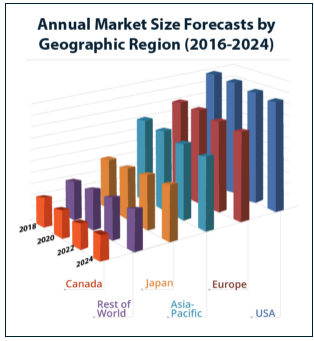
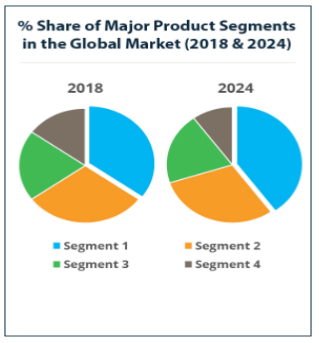
Global Cardiovascular Information System Market Size and Forecast:
The Global Cardiovascular Data system Market was valued at USD 665.27 million in 2016 and is projected to flourish in USD 1,269.09 million by 2025, growing at a CAGR of 7 .4% from 2017 to 2025.
The increasing pervasiveness of cardiovascular diseases (CVDs) is predicted to spice up the enlargement of the worldwide cardiovascular Information system Market over the forecast period. The increasing prevalence of cardiovascular diseases like cardiac failure, arrhythmias, and ischemic heart situation is that the chief driver of the worldwide Cardiovascular Information system Market. The increasing number of challenges related to cardiovascular care including the organization of huge amounts of knowledge, data retrieval, and therefore the maintenance of patient history records is forming the inevitability for progressive systems, like Electronic Health Record (EHR) systems, which might facilitate data 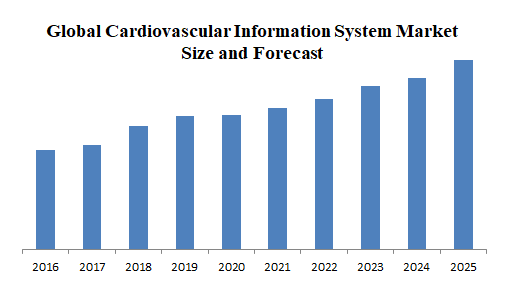
Industries Associated with Cardiology Research:
- Medtronic, Inc.
- Boston Scientific Corporation
- St. Jude Medical, Inc.
- Abbott Laboratories
- Cordis Corporation
- BIOTRONIK SE & Co. KG
- Sorin S. P. A.
- Edwards Life sciences Corporation
- Terumo Corporation
- Biosense Webster, Inc.
- C. R. Bard, Inc.
- AGA Medical Holdings, Inc.
- MAQUET GmbH & Co. KG
- Sahajanand Medical Technologies Pvt. Ltd.
- Vascular Concepts Limited
- GE Healthcare
- Philips Healthcare
- Fukuda Denshi Co., Ltd.
- Cardiac Science Corporation
- Welch Allyn Inc.
- ZOLL Medical Corporation
- Eurocor GmbH
- B. Braun Melsungen AG
- OSI Systems, Inc.
- W. L. Gore & Associates, Inc.
- Berlin Heart GmbH
- Thoratec Corporation
- Nihon Kohden Corporation
- Teleflex Incorporated
Universities Associated with Cardiology Research:
World Wide:
- Harvard University
- Cornell University
- Yale University
- University of Texas South-western medical center
- University of Michigan
- University of Washington
- Harvard University
- Vanderbilt University
- University of Rochester
- University of Alabama-Birmingham
- Emory University
- Northwestern University
- Vanderbilt University
Pharmaceutical Companies in France
- Novartis
- Sanofi Mylan Servier
- Pfizer
- Merck & Co
- Johnson & Johnson
- Roche
- Bristol-Myers Squibb
- Bayer
- Astrazeneca
- Celgene
- Novo Nordisk
- Fresenius
- Aurobindo
List of hospitals in France:
- Hôpital Necker
- Hôpital Saint-Louis
- Hôpital Hôtel-Dieu
- Hôpital Américain de Paris
- Hôpital Européen Georges Pompidou
- Hôpital Pitié Salpêtrière
- Hôpital Saint Joseph
- Hôpital des Diaconesses
- Hôpital Cochin
- Hôpital Lariboisiere
Importance and Scope:
Cardiology is a branch of medicine treatment with disorders of the heart. It includes analysis and treatment of CAD, coronary failure, Electrophysiology, Inherited heart illness and Congenital Heart Faults. Cardiologists study the dysfunctions of the heart, but the study of adolescent and child heart disorders are through divergent training pathways. The surgical piece aren't included in cardiology and are within the discipline of cardiothoracic surgery, for example, Cardiopulmonary bypass and Coronary artery bypass surgery are two surgical procedures performed by Cardiac surgeons, not cardiologists.
Advantages of Participating at our Webinar
- The advantages of the Speaker and abstract pages are created in Google on your profile under your name would get worldwide visibility.
- Our comprehensive online advertising attracts 30000+ users and 50000+ views to our Library of Abstracts, which takes researchers and speakers to our webinar.
- Meet with hundreds of like-minded experts who are pioneers in Cardiology and share ideas.
- All participants in the Conference would have a different reason to participate with eminent speakers and renowned keynote speakers in one-to-one meetings.
- A rare opportunity to listen what the world's experts are learning about from the world's most influential researchers in the area of Cardiac Diagnosis at our Keynote sessions.
- Cardio Summit intensive webinar schedule, you will acquire experience and expertise in strategic gift preparation that is worth its weight golf, forming an impressive array of recognised professionals.
- Best Poster Award nominations.
- Award for Outstanding Young Researcher.
- Group Registration Advantages.
Benefits of Participation for Speaker
- Worldwide appreciation of the profile of Researchers.
- Obtain credits for professional growth.
- Explore the latest of cutting edge analysis.
- Make long-term bonds at social and networking activities.
- An ability to advertise one page in the distribution of abstract books and flyers that ultimately gets 1 million views and adds great value to your research profile.
- Learn a transition beyond your area of interest to learn more about new subjects and studies away from your core subject of Cardiology.
- We have distinctive networking, learning and enjoyable integration into a single package.
Benefits of Participation for Delegate
- Professional Development-Improve understanding and knowledge.
- Attendance at webinars supports rejuvenates and energises delegates.
- Your involvement in our webinar will help with a new methodology and ideology that can be used to broaden the outcomes of businesses or industries.
- Opportunities for Cardio Summit researchers and experts in the same field to meet and exchange new ideas through an Conference.
Benefit of Participation for Sponsor
- Exposure to the international environment would increase the possibility of new companies.
- Opportunity to demonstrate your company's latest technologies, new products, or service your business to a wide range of international participants.
- Increase business by our webinar participants through lead generation.
- It takes a lot of time, effort and drive to create a successful company, so it's always nice to have a network of colleagues and associates to draw energy from individuals who share a common drive and objective.
- Conference in neurology provides opportunities for more attention and contemplation that could help you move your company to the next stage.
- Benchmarking main organization plans and moving it forward.
- Get feedback from trustworthy people at our webinar to your company questions and challenges.
- On our webinar banner, website and other proceedings, branding and marketing content, the advertising logo of your company.
Benefit of Association for Collaborators
- Nobody has these massive visitors to Cardiology in the world, this is the best forum to highlight society.
- Creating long-lasting peer relationships.
- In our webinar banner, website and other proceedings, branding and marketing material, promotional content and your Organization logo will increase your number of subscribers/members by 40%.
- The exposure of our event to your Company listing in the Global Business forum will have a great effect on your association.
- Your representatives can network to update their knowledge and understanding of your organisation and services with key webinar delegates.
- Neurology advertising materials such as posters, brochures, pamphlets, services that will be circulated to hospitals, universities, society and researchers will be integrated with information.
Conference Highlights
- Heart Diseases
- Cardio-Oncology
- Pediatric Cardiology
- Hypertension
- Cardiac Diagnosis
- Diabetes, Obesity, and Stroke
- Invasive cardiology
- Cardiac Toxicology & Pharmacology
- Vascular biology
- Cardiac Problems in Pregnancy
- Geriatric Cardiology
- Cardiac Regeneration
- Digital Health and Cardiology
- Cardiac Electrophysiology
- Cardiovascular Risk Management
- Fetal Cardiology
- Anti-arrhythmic Drugs
- Nephrocardiology
To share your views and research, please click here to register for the Conference.
To Collaborate Scientific Professionals around the World
| Conference Date | September 05-06, 2022 | ||
| Sponsors & Exhibitors |
|
||
| Speaker Opportunity Closed | |||
| Poster Opportunity Closed | Click Here to View | ||
Useful Links
Special Issues
All accepted abstracts will be published in respective Our International Journals.
Abstracts will be provided with Digital Object Identifier by





